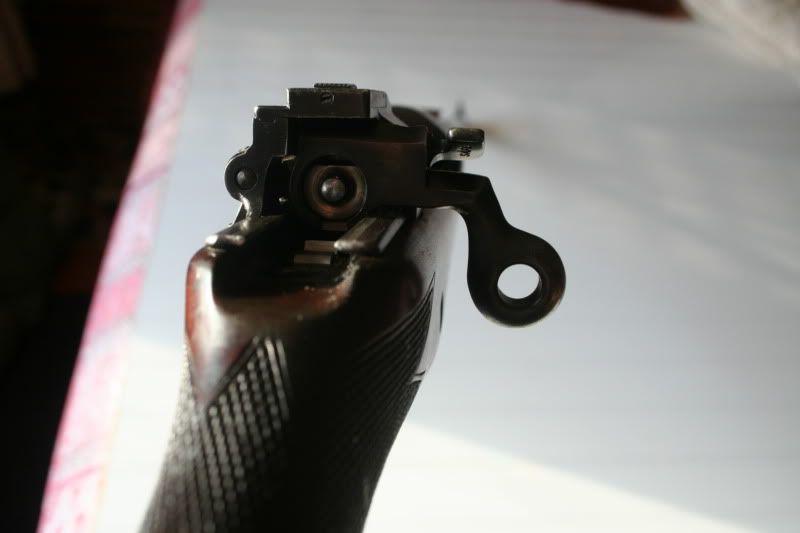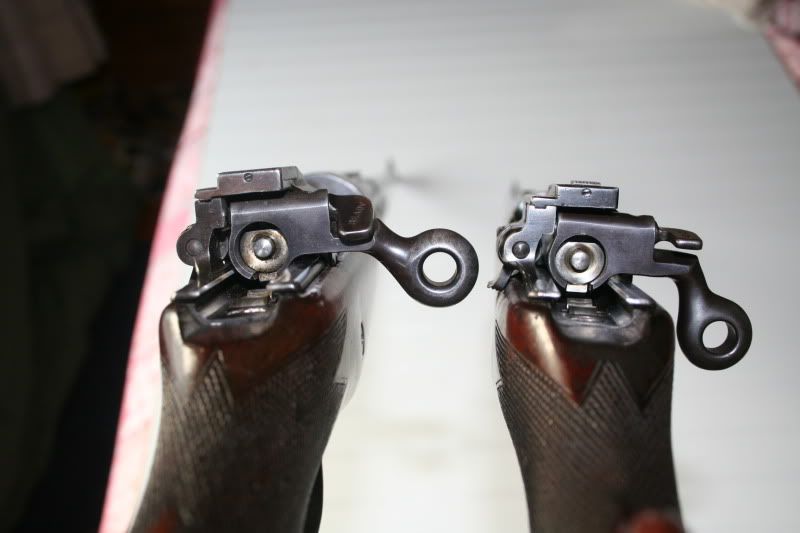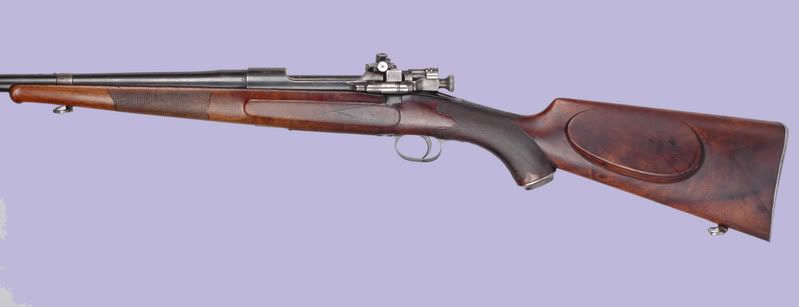|
S |
M |
T |
W |
T |
F |
S |
|
|
|
|
1
|
2
|
3
|
4
|
|
5
|
6
|
7
|
8
|
9
|
10
|
11
|
|
12
|
13
|
14
|
15
|
16
|
17
|
18
|
|
19
|
20
|
21
|
22
|
23
|
24
|
25
|
|
26
|
27
|
28
|
29
|
30
|
31
|
|
|
|
Forums10
Topics39,493
Posts562,053
Members14,585
| |
Most Online9,918
Jul 28th, 2025
|
|
|
|
Joined: Apr 2009
Posts: 158 Likes: 3
Sidelock
|
OP

Sidelock
Joined: Apr 2009
Posts: 158 Likes: 3 |
|
|
|
|
|
Joined: Dec 2001
Posts: 6,881
Sidelock
|

Sidelock
Joined: Dec 2001
Posts: 6,881 |
"Is it just me, or were many of the early custom makers that are discussed on this site just trying to copy the Ross Sporters?"
A very interesting statement, can you tell me who designed the Ross sporter stock?
MP Sadly Deceased as of 2/17/2014
|
|
|
|
|
Joined: Oct 2007
Posts: 1,672 Likes: 4
Sidelock
|

Sidelock
Joined: Oct 2007
Posts: 1,672 Likes: 4 |
How many Ross sporters were made? I have never seen one in the flesh.
|
|
|
|
|
Joined: Jan 2002
Posts: 1,074 Likes: 1
Sidelock
|

Sidelock
Joined: Jan 2002
Posts: 1,074 Likes: 1 |
As to design antecedents, are look at turn of the century catalogs from Euro & English mfgs might provide some comparisons.
As well, our resident scholars might crack into the files regarding that time frame'
Pretty obvious stuff, but wouldn't it be interesting to be able to place the Ross design within a framework of contemporary reference?
Any one rounded up an example, or reference to, of the fabled .405 Win M10 Ross?
Relax; we're all experts here.
|
|
|
|
|
Joined: Apr 2009
Posts: 158 Likes: 3
Sidelock
|
OP

Sidelock
Joined: Apr 2009
Posts: 158 Likes: 3 |
"Is it just me, or were many of the early custom makers that are discussed on this site just trying to copy the Ross Sporters?"
A very interesting statement, can you tell me who designed the Ross sporter stock? Mike - that's an interesting question and the answer takes me down several different paths. It's also a complicated question without a singular answer. First, I will state that the Ross sporter comprises many models and spans about 20 years. There were a couple pre-1900 sporter variations that saw very little production, but are clearly part of an evolution. For me, the evolution is quite notable as it progresses from the M1905 Sporter to the Scotch Deerstalker and to Sir Charles ultimate refinement, the M-10. In October, 1912 E.C. Crossman published an article in Outers magazine titled, "The New Ross" and at the beginning of the article he pictures a Ross sporter with the caption "The New Ross Rifle" beneath. I find this quite curious as the rifle pictured is a Scotch Deerstalker (circa 1907) yet in 1912 it is the new Ross rifle? Crossman was one of the very few gun writers of the day who could be described as an enthusiastic Ross fan. He states, "The arm is made up with pistol grip stock of splendid wood and balances like a fine shotgun... It is by far the quickest form of bolt rifle I have ever handled, faster even than the first Ross, described in the Outer's Book some time ago, on account of the more direct rearward pull of its bolt handle." These are but a few of his glowing comments but on the topic of the shape of the stock, he certainly drops his fan status: "Just a word in regard to the stock. I have come to the conclusion the Ross people know little about stocking rifles or else are unwilling to depart from the standard of English makers. I think it advisable in ordering a Ross to specify distinctly the measurements desired and to send template if possible.
The first Ross had a grip too large for the average sportsman, a stock too long, and a grip shaped entirely inferior to that of the new Springfield sporter. In the second Ross the fault was not remedied but exaggerated. Of the scores of rifle cranks who have examined the sporting Springfield as made by Wundhammer, I have not heard one do anything but praise the grip and the stock shape in general. The grip is made 4 3/4 inches around, rather oval in shape and, last but not least, is made very close to the trigger - 4 inches or less from point of grip to trigger. The result is that the third, fourth and fifth fingers - or the second, third and fourth fingers, as you please - are supported by the grip and the trigger finger is left free to pull the trigger. Due to the grip being quite close to the guard, the stock is made shorter as the hand is carried further forward and the stock is apparently lengthened thereby. We have found that 13 1/2 inches is extreme - merely on account of this short grip.
Now comes the new Ross, a splendid and well finished weapon and with the stocking well done in detail, but with a stock shape and size that nobody could shoot in comfort.
Note the difference. Cicumference of grip 5 1/2 inches - 3/4 inch larger than Wundhammer's full grip and one inch larger than most American grips. The grip is so shaped that when the hand is in the correct position to pull the trigger, the grip is not worth a whoop in Avernus. In other words, it the same old excrescence used by most American makers for a pistol grip. Such grips might as well be left off, they are for looks alone. The distance from point of grip to center of trigger is over 4 1/2 inches, while that on my Springfield is but 3 7/8 inches and the grip is full curved so it does some good. You will have to try such a grip to appreciate the difference.
The work is well done and I think with somebody that insisted on having what he wanted the Ross stock man would do splendid work. But my advice is to "watch a leetle outd" when ordering a Ross to avoid such affairs as 5 1/2-inch grips with the curve somewhere to the sou-southeast of where is should be. When a little, quiet, comparatively unknown German gunmaker with a one-room workshop can back off the map the stocking of a factory like the Ross, it is high time for the said facotry to take a brace. And that the said backing has taken place I can prove by anybody who has handled the two rifles." So, one thing we know, Crossman had high praises for the Ross rifles as well as Wundhammer. One can almost imagine Sir Charles reading the 1912 Outers article and seeing the wisdom of consulting with Wundhammer. From what I have read about Sir Charles however, he was more than a tad arrogant and not the most likely candidate to feel the need to consult with anyone on any matter. In Jim Foral's excellent 2002 Gun Digest article, "The Model 1910 Ross: The Best Rifle In The World" he states of the Ross: "The stock is classically elegant in profile. The general lines suggest a degree of pre-WWI British influence.... Compared to the generally fair quality of checkering found on most factory sporters of the period, the checkering on the Ross ranks among the very best. Overall, there is avery apparent sense of quality to the Ross. It is cosmetically and aesthetically appealing to those with classic tastes. Rifle shooters of any generation would be hard-pressed to find a more nicely fitted factory rifle."Jim goes on to describe an apparently new variation of the M-10: "By 1912, the Ross company introduced a variation of the 1910 Model to conform with American preferences and intended for the U.S. market. E.C. Crossman introduced the new model to an awaiting American public in the October, 1912 issue of OUTERS magazine.
The action was the basic model of 1910, and the changes were purely cosmetic. The U.S. model had an inch shorter length of pull, a somewhat narrower grip and a significantly higher comb. While still retaining the Schnabel, the forend sported a neater and trimmer appearance. The stock was patterned after a design the Ross Rifle Co. had solicited from Ludwig Wundhammer, who knew something about American taste in rifle stocks. Aside from stocking modifications, the bolt handle was turned down to closer to the side of the receiver, and the barrel length was reduced to 26 inches."Here is where I will insert what I know. First there is a variation of the M-10 that was made with a turned down bolt (I will post a picture shortly) (as an aside, I will mention that the turned down bolt appears on the experimental .280 Military Match rifle as well). This variation was made in 1912 - and it seems 1912 was the only year it was available. I have several of these. However, that is really the only way this variation is different from other M-10's. The M-10 could be had with a 26 or 28 inch barrel and the 26 inch barrel is not exclusive to the turned down bolt variation. The length of pull on the turned down bolt versions are not 1/2 inch shorter nor are the stock dimensions consistently different. Given the M-10 stock did not change, this leads me to believe that Wundhammer did not influence the design of the stock.
|
|
|
|
|
Joined: Apr 2009
Posts: 158 Likes: 3
Sidelock
|
OP

Sidelock
Joined: Apr 2009
Posts: 158 Likes: 3 |
Here are two pictures to illustrate the "turned down bolt" variation:  And as compared with a the regular bolt version of the M-10: 
|
|
|
|
|
Joined: Dec 2001
Posts: 6,881
Sidelock
|

Sidelock
Joined: Dec 2001
Posts: 6,881 |
Interesting read, thanks for taking the time to post it. I've been doing a little digging on the subject and have this to offer. From an Outer's Recreation article by Crossman Feburary, 1922 "A New Stock for the Service Rifle" Talking about Ludwig Wundhammer. I knew that Wundhammer had a good working relationship with Ross and bought wood and barrel band sling swivels from them but don't remember reading this before. 
MP Sadly Deceased as of 2/17/2014
|
|
|
|
|
Joined: Apr 2009
Posts: 158 Likes: 3
Sidelock
|
OP

Sidelock
Joined: Apr 2009
Posts: 158 Likes: 3 |
This adds to the mystery for me. It is interesting that E.C. Crossman had almost total abhorence for the Ross stock yet he had the opposite opinion of Wundhammer. So, if Wundhammer had a hand in the Ross stock design, why did Crossman detest it. It would seem the logical answer would be that Wundhammer consulted with Ross for the 1912 redesign of the M-10 stock, making fabulous improvements. Yet, the stock is no different? By the way, I don't agree with Crossman's assessment of the Ross stock at all. And, I've never handed a Ross sporter to anyone and had them shoulder it and complain about the fit, handling etc.
By the way, I do basically agree with the comments about the Newton stock. And on the topic of the Newton, he clearly borrowed much from Ross in the development of his rifle.
|
|
|
|
|
Joined: Dec 2001
Posts: 6,881
Sidelock
|

Sidelock
Joined: Dec 2001
Posts: 6,881 |
I don't remember if my 1910 Ross had castoff or if the toe was out any. Do any of your Ross rifles have castoff? I liked the 1910 I had and thought the stock fit just fine, nothing like a Wundhammer but OK. It's hard to explain but everyone should have chance to shoulder a Wundhammer. It is my belief that Wundhammer fit a stock to a shooter better then anyone. Townsend Whelen's Wundhammer, 
MP Sadly Deceased as of 2/17/2014
|
|
|
|
|
Joined: Apr 2009
Posts: 158 Likes: 3
Sidelock
|
OP

Sidelock
Joined: Apr 2009
Posts: 158 Likes: 3 |
Very nice sporter. Very historic too.
I haven't seen cast-off on Ross sporters.
|
|
|
|
|